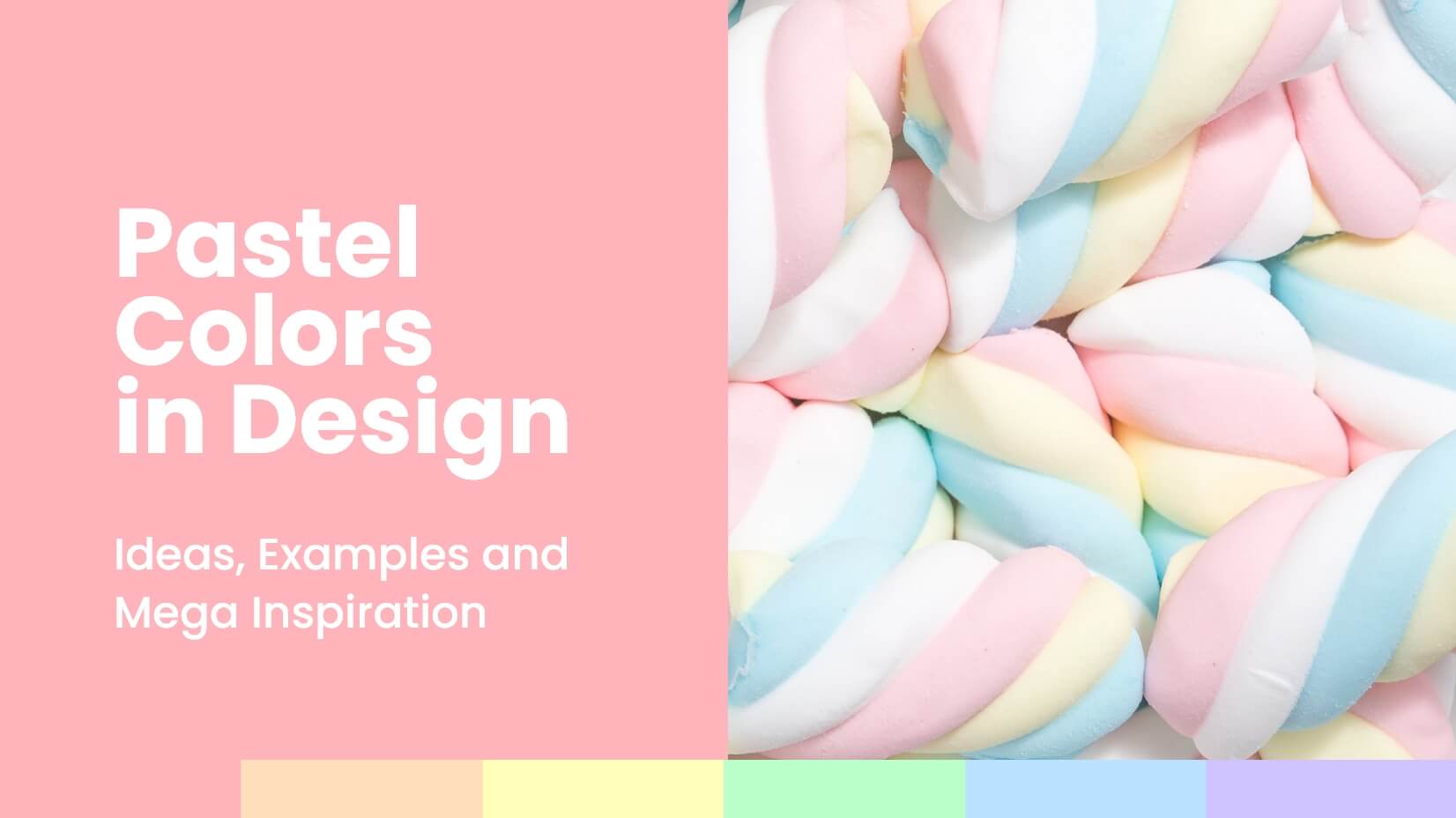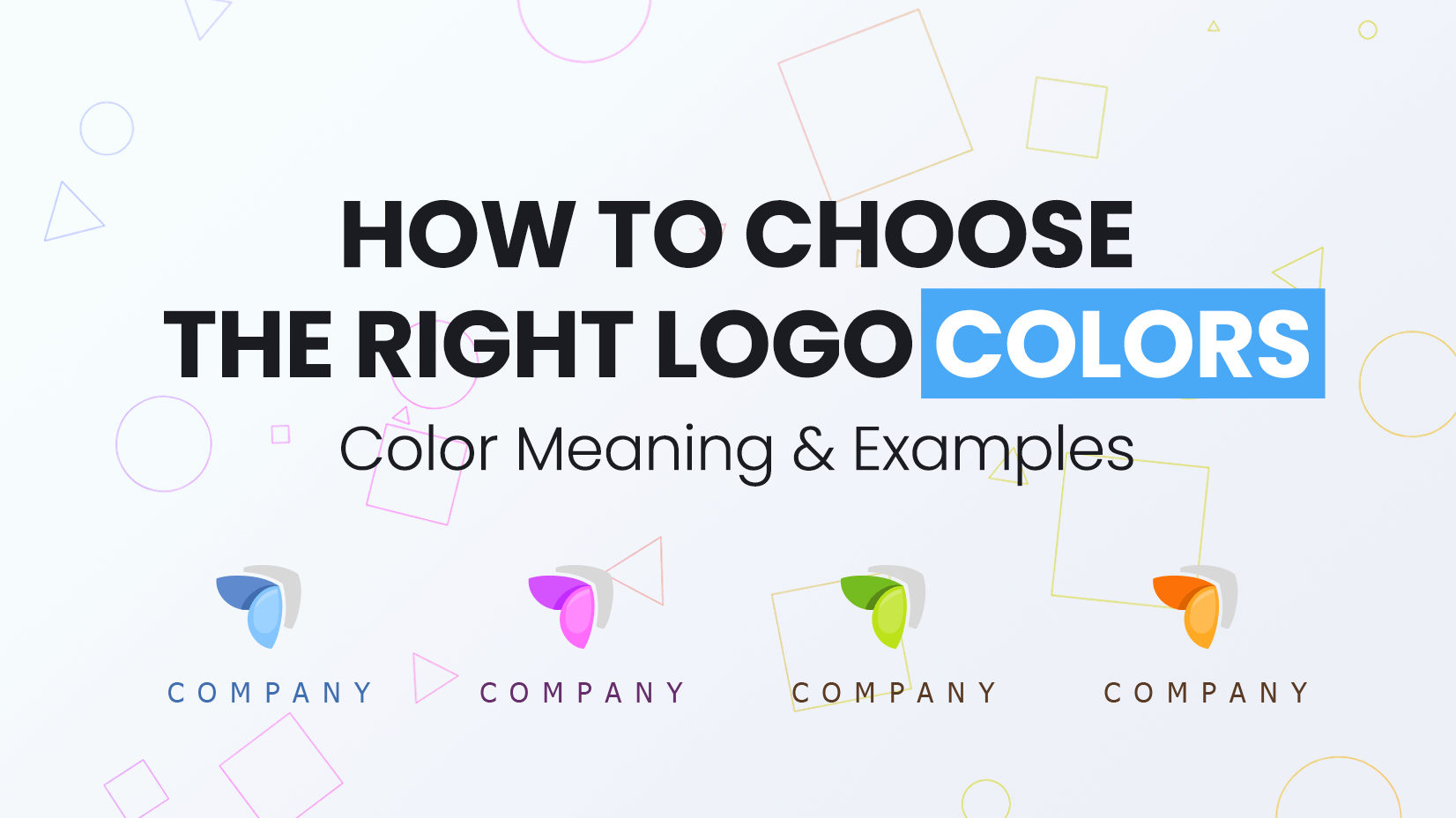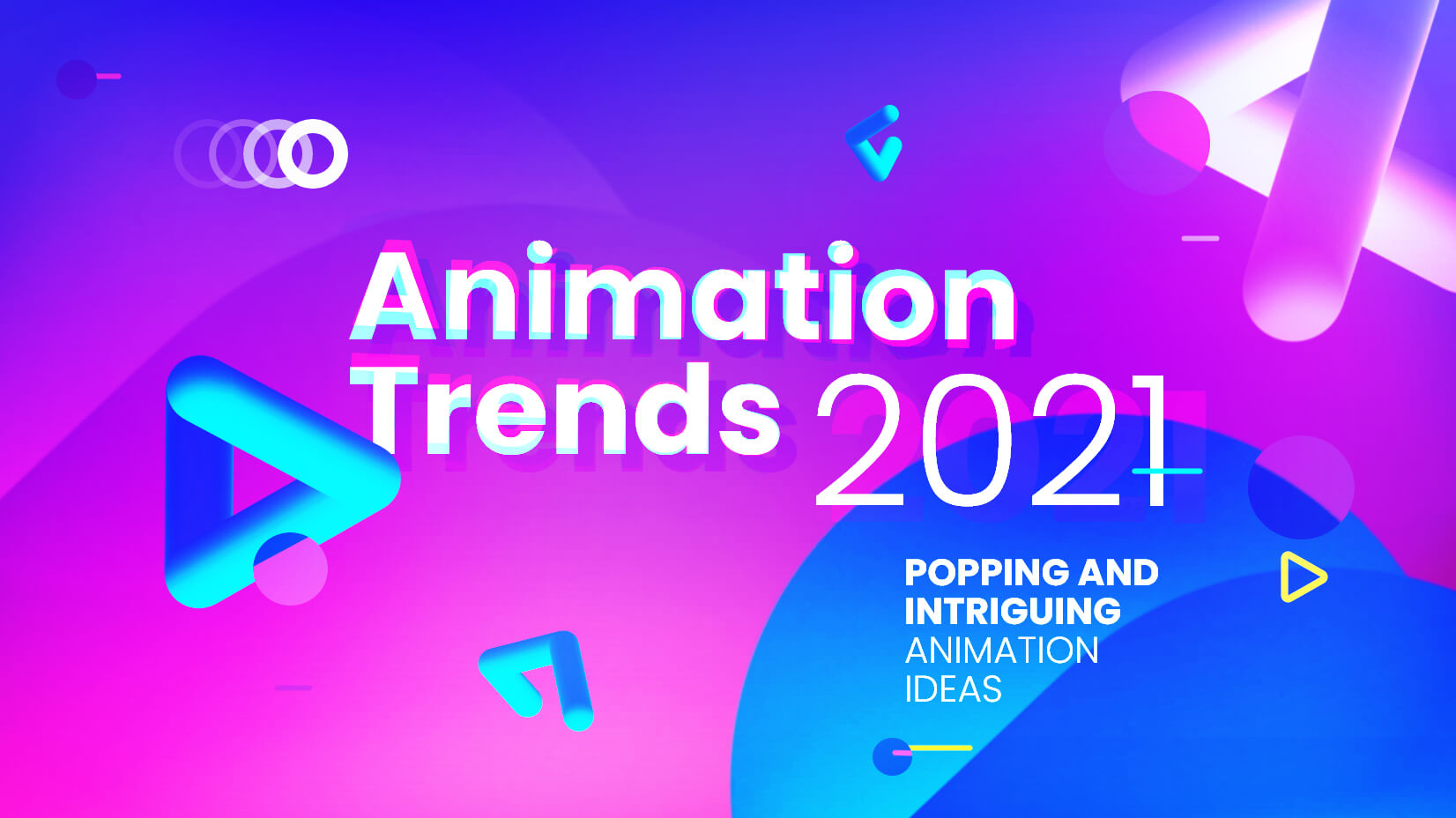
Everybody loves pastel colors and today we’re going to talk about it. There is a reason for the obsession with these soothing eye-candy palettes that are once again trendy in their full power.
It’s their light-weighted way to communicate the soft emotions of optimism, joy, and peace that we all need, so in today’s article, we’ll indulge in some really amazing and satisfying pastel color palettes.
We’ll start with some brief theory of how pastel colors impact the audience, then we’ll dive through the different uses of those soothing combinations in web and graphic design, photography, branding, packaging, and digital art. We’ll also include over 40 different pastel palette examples and ideas for inspiration.
Article overview
1. What Are Pastels?
2. How Pastels Impact Your Audience?
3. Tips For Balancing Your Pastel Palette
4. Different Uses For Pastel Palettes in Design
5. Pastel Palette Examples
Want to find more color combinations? Read our article Inspirational Color Combinations in 2022.
1. What Are Pastel Colors?
In short, pastels are pale colors with higher value and lower saturation in the HSV color model. Pale tints of primary and secondary colors. They are often described as soothing, washed-out, milky, and soft because of their weak chromatic content. Some of the most commonly used pastel colors are peach, lavender, mint, baby blue, pink, and lavender.
Pastel colors can be easily created by adding luminance to any pure color. Just like with pure colors, pastels interact the same when it comes to creating color harmonies: complementary, analogous, and monochromatic. For example, the same as green is complementary to red, mint will go perfectly with the pale pink.
Such palettes are often used for home decoration, photography, fashion, graphic design, and packaging. Let’s see why.
2. How Pastel Colors Impact Your Audience?
Pastel palettes might be soft and subtle but they can make a powerful impact on your designs. Their dual personality brings the unique ability to soothe the viewer while still manage to maintain vibrancy and brightness. You might notice that just looking through pastel color palettes has somewhat of a therapeutical and calming effect on your mind.
These soothing color combinations can simultaneously calm and also boost the viewer’s mood due to the serene setting they create. This way your designs can impact your audience by creating a warm, energetic, and enthusiastic mood without exhaustion.
Pastels easily remind you of spring and summer, sweets and babies, and bring joy and optimism. Many brands that target the female audience choose such color palettes for their identity in order to channel feminity. In addition, some pastel combination with metallics also creates a feeling of luxury.
3. Tips For Your Pastel Palettes
Before we proceed with the huge collection of pastel interaction examples and ideas, let’s look through some tips that could try out when you decide to include pastel colors in your palettes.
- The powerful impact of pastels comes when you use them collectively. Just one single pastel tone alone might lose some of the impact of your palette due to its desaturation. Try to fully commit to pastels and the results will reward your bravery.
- To convey a more classy and luxurious mood to your designs, you could enhance your pastels with delicate warm metallics.
- An especially effective way to add edge and contrast to your designs is to combine your pastels with black or dark navy.
- If you go for a retro vibe, you could bring back the 50s in your designs through pairs of complementary combinations. For a palette with four colors, for example, pale pink and coral would look extremely versatile with baby blue and dark teal.
- For designs that aim to be soothing but don’t require the sweet cheerfulness of classic pastels, a little bit of muted pastel palettes with grey undertones are actually neutral and more formal.
4. Different Uses For Pastel Palettes in Design
With all this in mind, let’s explore the use of pastel colors in different fields of design from branding and web design to packaging and digital art. The soft colors look inviting, warm, joyful, and delicious. This is exactly why pastels gained so much popularity lately and we see them everywhere. It brings a great balance to our lives in a contrast to the stressful and chaotic geopolitical climate. These palettes convey that serenity and attract audiences with their grounded and bright nature, so we’ll have a look at many examples and see this effect in action.
4.1. Pastels in Infographics
Infographics are an excellent tool for boosting your online presence and identity, telling a story, or presenting yourself when you apply for a position. In all, the best thing about infographics is that can fit a lot of data in a well- structured simplified, and easy to digest way. With that being said, visuals are everything when it comes to creating infographics.
In order to make your heavy data readable and easy to scan, and to put emphasis on the most important elements that you wish your audience to see, you should definitely know how to combine colors and create accents and contrast. With pastel colors, you not only achieve this, but also make your infographics look lighter and easy on the eye without losing the contrast or the elements you need to be identifiable at first sight.

CV 2020 – Francesca by Cesca De Mesa
#45496A #7D8BAE #E5857B #F1B2B2 #E8CCC7

Matilda┋Book Infographic by Eli Marreros
#9AC5E5 #4FB19D #EDCE7A #C98C9A #E5C6C3

Miles&Smiles by Funda Gür Süzen
#C6B4D8 #CEE0E6 #F0EAE0 #F5C0BF #EAD4D4

CHEST GUIDE by zhanghan
#CE1B7E #EED5E4 #3298A2 #EFEEF2

2010 FORBIDDEN CITY by Sung Hwan Jang
#E36255 #EC9A86 #A2C5C9 #F3C262 #F1E0CE

Infographic Design / Don’t Skip Your Steps by Aleyna Tezer
#E3ABAC #F4D2D1 #4768B1

Killing the Great Barrier Reef Infographic by Lauren Nugent
#ECA38C #F2C8BF #F6DFDB #83C2E5

Infographic – Fast Food by Jacquelyn Tan
#E9695B #F6CBCB #3C96AB #F0E5AA

Infographic: Are Children Your Future? by Susie Lee Morris
#F38A88 #F3C4C3 #46ABCE

[ infographic ] by Gaeun Kim
#EBBBAB #9DBDA4 #FBF8E9

Risk of Being Overweight Woman Infographic by Jan Arun
#6A5853 #EF9182 #E09A96

Classic Cheescake – Recipe Project by Sara Sarhangpour
#F0AECF #BDE4E7 #FBD67D #FCE7B6
4.2. Pastel Palettes in Web Design
Most websites share one thing in common: they are clean, light-weight as a feather, and have a lot of negative space. Although sharing such similarities, they are very diverse in their creative way to combine colors. Since today we focus on pastel colors only, we’ve included some amazing examples of web designs that use such palettes.

Eatruscan – animation by Multiple Owners
#359495 #46B2BB #F9AD9B #FDF4E8

Nauraashraf | Malaysia | 2019 by Intan Fazlina
#EABEB4 #F3E9E2 #EBEBEF

LookBook Pastel Keynote by Graphic Assets
#E42557 #E7609A #F4A81D #66C192

Cosmetics shop landing page mockup by Yoana K
#EDD2D4 #F1E8E8 #F8F9FA

NATURAE – Skincare Products Branding by Valentina De Lisio
#F7F3F0 #E4EAE8 #F4EDD4 #F4E4E1

Migo – Aseguradora de Bicicletas by Francisco Javier Dominguez
#575656 #FCF7EE #AAC8D4 #F27290

Picasonic Presentation Template by Yusuf Alghazali
#EE3465 #F3BCC0 #A5408B #5EBFDA

Joos by Chloé Leclerc
#F7DDD9 #DAEEE2 #F7DE41 #858A64

Flower Boutique E-shop UI by Multiple Owners
#FCD4CF #FDE5E6 #C5D59D

Customize Product by Alison Danis
#F7A2A1 #FCD8DC #FEF5F6

Cupcake mobile shot by Marta Więckowska
#FBD1B6 #FDF0E5 #FFF1EA

Landing page UI by paul chagnon
#D6CAE4 #F2E0ED #F8C9CF #FEF2C9

Video cover experiments by Kate Buke
#A9A3BF #C6BBCF #FCE7F0

People App Exploration by Delip Nugraha
#8075B6 #FBCDB3 #CBCBCA

Season 2 – D4 by Jegor Lazarev
#F6AC1B #FCE9BE #F6BCBC #FEEBEA

Expedition landing page by Riko Sapto Dimo
#CEDEF2 #F2F7FC #F0C863 #F9F3DA

Exploration – Fruit Juice Landing Page by Dwinawan
#5BC7D2 #F5F9FA #F05435

Babyfood Ecommerce Website UI by Katka Ther
#54B9AC #D8D524 #FCFAD8

Bakeology – A Bakery App Concept by Rameez Remy
#5E4388 #CBCAE6 #F7A7A6
4.3. Pastel Colors in Digital Art
When it comes to digital art, pastel palettes bring a part of the 80s retro-futuristic feeling in a new more modern, and sophisticated way. The neons are replaced with softer tones and the visuals look more delicate. In the following examples, you’ll notice how well pastels work with art, especially 3D art and flat design.

Gradient 3D orbs by Jennifer Carlsson
#A8A1CF- #AADEEB ; #D7ECFA – #E3BBD8 ; #F3CDE1- #A7AAD5; #A1D8CE-#F4F6D4 ; #DDC3DE- #FDF1C4

PASTEL by Pepe Delgado Navarro
#413948 #F596A1 #FADEEB #C4E1F6 #F9C975

Apple Inc. by Mark Kirkpatrick
#F8A57F #FAD4A6 #FBE7AB #45958E #B7BDA0

Goth Ice Cream Props by Heather Hughes
#8E65AB #DC94B0 #E8C6DE #D3BA83 #EBEDD4

Planet by Gustavo Henrique
#E3ACA7 #F4DCDC #E49251 #F1BA71

Postcard from Morocco by Putri Febriana
#EBA58D #F2C0C1 #A0B9E0 #E0E2ED

DREAMWORLD by Melissa Mathieson
#9297C8 #EE7036 #F7CB9A #F6C1A7 #B6C796

MILK TOOTH Sphere Collection. Tarot Cards. by Max Löffler
#344555 #8CA8BE #AFBDB0 #E4C0BE #FEFBEC

Pastel City by Ann-Sophie De Steur
#76A79C #B4D0D0 #DB8E71 #E8CFC4

Skyscape Wallpapers by Junli Kato
#C3A5CE #F0C9D4 #F596A2 #FAD8C5

LABYRITHE by Yacine EA
#9C7C9C #EDCCE2 #6A94A2 #C4E2DF

Music: Rhythm of Romance by Multiple Owners
#E9AFAB #B5C6BC #FCFBE3 #DFC9C9

The Playground by MadeByStudioJQ
#E3C7E0 #F7A4A8 #B0DED9 #CBC0C0

Illusion Instagram Posts And Stories by Diana Hlevnjak
#C3E1EC #F5E1D2 #F2BAA6 #DED198

Koi Fish by Kelsie Tripp
#ACBEAA #D3DCD2 #EBEAE4 #E2B99B

Quarantine magazine by Cami
#F79A85 #FBC8B7 #877576 #CD8E30

Pastellhaus by Adriana Portobanco
#A6DBEE #7DC9BD #F7D7D6 #DDDEE0

Nothing Here Yet by Guntur Saladin
#F0505E #F08EA9 #F8BF5C #8EC6EC
4.4. Pastel Colors in Packaging
When it comes to packaging, the best use for pastel colors is in the fashion, cosmetics, baby clothing, and food industries. In fashion and cosmetics, pastels look luxurious and high-end; for baby clothing, they feel tender and soft, while for food packaging they bring extra sweetness and deliciousness.

yoffaboba bubble tea by Zuzanna Szczepanik
#DCC0D7 #98C3C8 #79A8DA #C7C37D

Muse Ice Cream by Mo Kalache
#E3808F #E1B3BE #969698

Apura by Sarah Saraiva
#E8BBC3 #E7ACA3 #C6D5AB

Branding & Packaging Design: The Daily Skincare by Rya Petines
#F5A5C3 #99D8E0 #E5E4DB

J. Curl — Joyful Hair Care by Multiple Owners
#E395B7 #C4E4D2 #BEDBE4

Newport Coffee House 04 by Abe Zieleniec
#DCE6E6 #E6EFDF #EFE1D1

Yum Packaging Design by Alexandra Necula
#AED9D3 #DAD2C9 #D7B8C0 #ECCAB7

Rosa Pastel by NANI C
#ECA8A7 #E6D7D4
4.5. Pastel Colors in Graphic Design
Just like in web design, graphic design also benefits from pastel colors and their soothing and warming effect. The use of these color combinations is versatile, as they always add luxury to the softness.

Makeup Cartel | Infographics for Blogs by Rute Shimizu
#CE7E73 #F8A898 #51C9F1

2020 CD Case Calendar by Krystal Nguyen
#8B86BE #DEB0BD #ECB761 #CBD690 #86ABBA

just do eat. бъ VA Designer
#E8EDED #EDDEED #A7DAF6

Daydream Studio by Anna Tiburzi
#9F9ECE #DAB5D6 #E8D9AD #BFD8B9

Lodu Creamery | Branding by Celeste Schwalm Pich
#92D9F8 #F1AACB #FBE090 #73432D

Catton Pastel Keynote Template by Graphic Assets
#EA7B6B #F7CDC6 #8AAEC9 #F9E799

NOUR MAGHRABY | Couture by Omneya Al Ghuzzy
#F5D6CC #F9F8CD #DAEBC7 #D1E0F3 #C19D3F

The Icicles Brand Identity Guidelines by Alex Spenser
#363152 #F7A7A6 #BDE3DE #D1ECE9

Ice-Cream Brand Concept by Alex Spenser
#F7A7A6 #BDE3DE #363152

Surreal+Architects | Hurts by MadeByStudioJQ
#CFC2D9 #D3CEE0 #EB9DAF
4.6. Pastel Colors in Photography
Photographers use pastel colors to add more surrealism and modernity. These combinations complement the beautiful compositions with powerful yet airy and light colors. Photographies with dominating pastel colors are ideal for fashion magazines, futuristic compositions and product photography, especially in the clothing and food industries.

Rainbow Pastel by Lidiya Gubatenko
#A08AC1 #E79BBD #B5D990 #F9D407

BS Payone with Robert Grischek by Recom Farmhouse
#D6D0BC #D8575D #A3BBCE #808080

S P L I T by Weston Doty
#3EBAD0 #FBDE71 #F4F4F2

BUBBLES TROUBLES by Multiple Owners
#D7E8EE #F3EEDD #CFB382

Product photography by Abdul Mutlib
#F3E49B #9DD9E1 #EEACC2

Sweet Style by Paloma Rincón
#EEA4C8 #33A886 #DED5C0

SADGIRL_404 Not Found by Multiple Owners
#D8CCBA #E89594 #9299BD

JAPAN PASTEL MAZE by Elora Pautrat
#495195 #E9BC9E #EDCFA8 #EEB6D4
5. Pastel Palette Examples
We’ve arrived at the best part of today’s journey in the world of pastel colors. Let’s enjoy some examples of pastel palettes that aim to inspire you and convince you further of why these soothing colors are so amazing and why everyone loves them so much.
5.1. Pastel Palettes with Pink
Baby pink, rose, punch, blush, flamingo, lemonade. Pastel shades of pink are feminine, lively, adorable, and delicious. Palettes with pastel pink invoke tenderness, joy, love, and extreme cases of the munchies for something sweet.

Ombre Balloons by Amy Shamblen
#FDF4F3 #F8D6DD #F7D3E4 #F1B3CD #F0C2A8

Photography by Joanna Kosinska
#FFEBD8 #F8E4E0 #F4C5C6 #CF948E #DD7E81

sweet & simple by Mong Bui
#ECE2EB #F4E0EA #EFC9D6 #EFB1C7 #FCD97D

Person riding a boat by Jess Vide
#F6CBC0 #F1A09E #F0A0A8 #EFAA97 #246B69
5.2. Pastel Palettes with Violet
Violet is the color of spring. This is why most shades have the names of flowers and fruits: violet, lilac, lavender, orchid, floral, mulberry or plum. Combined with baby blues or mint greens, violet communicates youth and sensuality.

Close up of Bridal Bouquet by Christina Winter
#EDEDEE #E8E3EC #D9BCD6 #9B6F89 #A1608C

Pastel Pink Cherry Blossoms by Dakota Monk
#F3DDEB #E8C6DD #C291A1 #B66A8F #AE4A74

Image by Paweł Czerwiński
#84C9EF #B4D2ED #CBBDDD #DCB5D4 #E3B1D2

bokeh fairy lights by Sharon McCutcheon
#A1A3B4 #B1A9B9 #BCA3AF #D5B7B6 #E6D4CB

Petaled Flowers by Micheile Henderson
#D9CEDA #D6ACC3 #C6B3CF #AF689B #B7B577

Light bulb by Pixabay
#F5E7EF #E2B6D5 #DCAED1 #CC92C1 #AE4C9D
5.3. Pastel Palettes with Blue
The color of the ocean and sky communicates serenity, inspiration, and calmness. In its pastel shades, it adds a sense of security, curbs appetite, and stimulates productivity.

Greek Cottage by Ryan Spencer
#CBE0F4 #9BC4E0 #E5E1EB #E3D7E6 #C7C9E0

Photography by Quentin Lagache
#E8ECEC #CADDE4 #A6C4D0 #88ACBC #EBDBD1

Organic Vegan Meringue by S O C I A L . C U T
#DBE1F0 #ABCCDD #75A5B8 #A7D0D8 #E0C323

dream field by Yang Shuo
#F5D8C8 #DFE2E3 #C6CCDF #ACBEDD #709ED0
5.4. Pastel Palettes with Green and Teal
Teal is the perfect balance of the stability of blue and the optimism of green. It brings elegance and balance to the pallete and it’s often used in logos, web design, and interior design. It looks great with coral, pastel purple, and brown.

Pastel Macaroons by Renata Tupynamba
#EFF2F7 #E6EEE9 #AFC8B2 #8FA678 #BFB3B4

Image by Mink Mingle
#F7F9ED #F3F7E6 #DBEADD #C4DCD3 #B5D5D0

Perfect Cloud by Romello Williams
#DEEBEC #BED9DD #AECFD0 #73B3B2 #3C979F

A classic vanilla cupcake by Brooke Lark
#E1EFF5 #C6E4E8 #ABDAD9 #E1A779 #ECD1E2

flowers by Janine Meuche
#DFEAA6 #96B23C #628D3D #F2CEDD #665048

Photo of leaves by Madison Inouye
#D7E9E6 #9CBB89 #638262 #416F5D #D5B1C8
5.5. Pastel Palettes with Peach and Brown
Peach brings a high degree of positivism and rejuvenation. It has great stimulating benefits and when combined with other similar pale yellow and pinkish tones or brown, it significantly improves the mood and increases happiness. Depending on the intensity of the colors, it can fill your designs with positive energy and romance.

Photography by Liana Mikah
#DDDADD #DCB8A5 #CE9E96 #D58677 #C87452

Milking it by ian dooley
#F1E8EA #F0E0D9 #F0E0DA #EDCDBA #E7B69E

Daisies and Coffee by Liana Mikah
#DFD3C2 #DFCFB5 #DABA9E #D6AE7E #C69468

Northwest Washington by Erol Ahmed
#F7DFD6 #F0D1C3 #ECAE9B #CE755F #B7D1D5

Composition by Ella Jardim
#E8C8BE #D19D87 #C2734E #D7BE9F #4C484F

Elegant bouquet by Secret Garden
#F0C9BA #CA8F7A #C46F4D #C86A58 #C64E2F
5.6. Pastel Palettes with Crimson
This color creates the feel or urgeny and stimulates the body. In more washed-out and soothing shades, however, that intensity loses a little bit of its pressure and creates more welcoming and easy-on-the-eye visuals. This goes especially when crimson is combined with peach, pinks, pastel blues, and greyish green.

La muralla Roja 2 by beasty .
#F4C5C9 #EFA5A8 #E496A0 #C36D78 #BE535D

pastel colored candy by Sharon McCutcheon
#E5E4F0 #D5D3E5 #F0AFCD #EA7DA2 #E53944

Red-orange waves by sergio souza
#F1A183 #ED884C #E64F25 #BD2630 #991B27

Pink drink by Adrianna Calvo
#D6BFBA #E1B1AB #DA6C64 #B63231 #AFAEA4
5.7. Pastel Palettes with Yellow
What we know about yellow is that in more vibrant tones provokes urgency, creates anxiety and discomfort that draws impulsive buyers and window shoppers. In warmer tones and combined with pastels, softer browns and even greys, yellow calms down its anxiety and still keeps its optimism and cheerfulness.

Retro Television Set With Antenna by Matthew Henry
#BEBDB1 #F0CD87 #EAC575 #C7902B #AC6327

Yellow Tool Flatlay by Sarah Pflug
#F4D7A1 #F09C20 #C57429 #955223 #786552

Riped banana by Mike Dorner
#F2ED76 #F7E166 #F2CA48 #534173 #F0B9C7

Yellow ceramic chick by Jill Wellington
#E2E3C9 #E5DB89 #EFD67F #BF8E3D #D07328
5.8. Mixed Pastel Palettes
In this section, we will see pastel color combinations in their full potential with mixed palettes that have both warmer and colder tones and create perfect colorful harmony.

Photography by Heather Ford
#F1CCE1 #DFABCF #8FD2E6 #5D7AB5 #EBCDA7

Plate Of Pastel Macarons by Matthew Henry
#D6B0BA #9FB0CF #E8E9D5 #E8D7D1 #CFB4BA

Flat Lay of Colorful Cereal by Sarah Pflug
#FAE094 #F4C4C6 #A0DAEA #A2D188 #D9BB97

Marshmallow Candy Texture by Matthew Henry
#F6D9E1 #DCEEF8 #FCDDA3 #FBF2D2 #F1F1F2

Glitter Glass by Amy Shamblen
#FAE5E3 #EFA4A2 #F3F1D9 #FBF6B5 #CCB28B

Chocolately goodness in a crispy shell by Annie Spratt
#D3DFDE #CBC7D0 #E5E1BB #DFC0C2 #CB98A1

A bit of wall decor by alexandra lammerink
#E8E9E6 #D7BCBB #E7CD97 #E4BDB3 #6E8F8D

(C M) Y K bty Modern Affliction
#EEACCB #E094B2 #954B63 #ADC0DA #7083A6

Close Up Of Painted Tools by Sarah Pflug
#BAC7E5 #F2A51E #E39025 #8D7051 #7B7E74

Irsha Street by Fee Billen
#D6E5F1 #F9E8C7 #BAB4BD #E0C2D6 #D0CAA6
Final Words
In conclusion, what we can say about pastel colors, is that they are beautiful, versatile, and can be great mood boosters. Although pastels were recently viewed as old- fashioned, their obvious benefits and contemporary vibe has brought them back on top as a trend.
So what do you think about the obsession with pastel colors and their huge presence in branding? Would you use these soothing palettes in your design?
You may also be interested in some of these related articles:





















